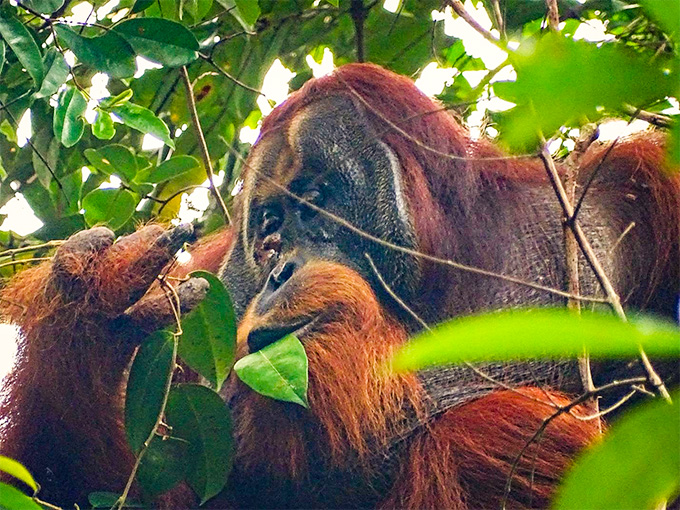bacteria: (singular: bacterium) Single-celled organisms. These dwell nearly everywhere on Earth, from the bottom of the sea to inside other living organisms (such as plants and animals). Bacteria are one of the three domains of life on Earth.
great ape: A group of four rather large primates, all of which lack a tail. They include bonobos, chimpanzees, gorillas and orangutans.
behavior: The way something, often a person or other organism, acts towards others, or conducts itself.
biologist: A scientist involved in the study of living things.
chemical: A substance formed from two or more atoms that unite (bond) in a fixed proportion and structure. For example, water is a chemical made when two hydrogen atoms bond to one oxygen atom. Its chemical formula is H2O. Chemical also can be an adjective to describe properties of materials that are the result of various reactions between different compounds.
cognitive: A term that relates to mental activities, such as thinking, learning, remembering and solving puzzles.
endangered: An adjective used to describe species at risk of going extinct.
liana: The term for any type of woody vines that roots in the ground and climbs trees. It doesn’t refer to any particular species, just the growth habit of certain plants. The term is especially reflective of the vines that have come to dominate many tropical rainforests.
orangutan: One of the great apes (which also include gorillas, chimpanzees and bonobos), this red-haired tree dweller shares 97 percent of its genes in common with humans. They can live for 60 years, with adults weighing 48 to 130 kilograms (105 to 286 pounds) depending on gender, age and health, with males being bigger. They have opposable thumbs (as humans do) and also opposable big toes, which aids in their gripping.
primate: The order of mammals that includes humans, apes, monkeys and related animals (such as tarsiers, the Daubentonia and other lemurs).
pulp: The fibrous inner part of a vegetable or fruit (such as an orange).
species: A group of similar organisms capable of producing offspring that can survive and reproduce.
traditional medicine: A term for therapies and treatments that have evolved by trial and error and then been spread by word of mouth. Many of these are plant-based therapies that tribal peoples or old-style “healers” have learned from their elders. Scientists have sometimes found that these work. But with research, modern medicine often can develop a more potent version in the lab or one that does not require harvesting rare species.









